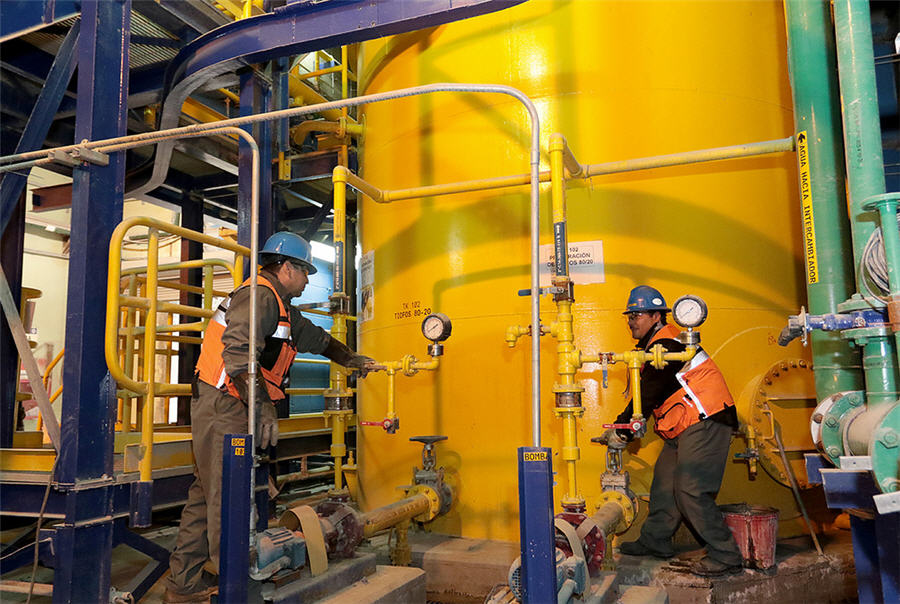Iron ore price craters

The price of iron ore fell to within shouting distance of all-time lows on Tuesday as worries about oversupply continue to dog the market and steel prices in top consumer China fall to record lows.
Benchmark 62% Fe import price including freight and insurance at the Chinese port of Tianjin fell 3.2% to $45.80 a tonne, the lowest since July 8 and down 9.5% in a month.
Today’s peg is also the second lowest on record since The SteelIndex began tracking the spot price in November 2008. Iron ore traded at $44.10 a tonne on July 8 this year, before bouncing back more than 9% the very next day. Today’s price compares with record highs above $190 a tonne hit in February 2011.
Ore with 62% content delivered to Qingdao tracked by the Metal Bulletin fared even worse, dropping 4.5% to $45.58 a tonne on Tuesday, also the lowest since the record on July 8, according to Metal Bulletin.
China forges 46% of the world’s steel and consumes for more than 75% of the world’s seaborne iron ore trade, but overproduction and unprofitability at the country’s giant state-owned mills have seen steel prices in decline for years.
Shanghai rebar prices dropped to a record low on Tuesday with the most active May futures contract exchanging hands for 1,748 yuan or $275 a tonne.
The decline in Chinese steel consumption is accelerating with use falling –5.7% to 590.47 million tonnes in the January to October period, industry group China Iron and Steel Association said on Friday. That’s tracking way below estimates by the World Steel Organization which forecasts steel demand in China will shrink by -3.5% this year.
Last month the chairman of one of the largest steelmakers Shanghai Baosteel’s Xu Lejiang, said the country’s steel demand is weakening at “unprecedented speed” and forecast nationwide output may eventually slump 20%, mirroring similar developments in Europe as the US and markets matured. The view from inside the country is in contrast to projections by the Big Three which sees slow but sustained growth through 2020.
The slowdown in China comes at just the wrong time for producers as a flood of new supply hits the market.
The big three producers – Vale, Rio Tinto and BHP Billiton – have been following a scorched earth policy of raising output and slashing costs to weather low prices and push out competitors.
The strategy claimed another victim on Tuesday with top North American producer Cliffs Natural Resources shutting down a second operation in Minnesota and laying of more than 500 workers.
The decline in the price of iron ore has also not been arrested by disruptions from the suspension of mining by Samarco, a Vale/BP joint venture in Brazil, following a deadly tailings spill. The dam burst also damaged a nearby Vale mine and the company said that up to 19 million tonnes of annual output is affected.
Those losses will be more than made up by Vale’s gigantic S11D project in the Amazon which the Rio de Janeiro-based company said will deliver ore – 95 million tonnes of it every year –way under budget and bang on time at the end of 2016.
Vale’s ambitions are more than matched by the other majors. After a near 15% year-on-year surge in output in the third quarter Rio is well on its way to reach 360 million tonnes in the next few years, while BHP Billiton which grew production 6% last quarter is on target to grow capacity to 290 million tonnes per year some time during 2017.
World number four producer Fortescue Metals added 5% to its targeted output hitting a rate 165 million tonnes per year in July.
Unlisted miner Hancock Prospecting’s Roy Hill is set to ship its first ore from its Pilbara mine which has a 55-million tonnes-a-year capacity early next year. That would place it within shouting distance of Anglo American which is predicting 53 million tonnes for this year before its Minas Rio mine ramps up to capacity of 26 million tonnes in 2016–2017.
“The scale of the oversupply in this market is such that small supply disruptions are only creating shortlived rallies, if at all,” Georgi Slavov, head of research at Marex Spectron, a broker told the Financial Times:
“The floor of this market is in the hands of the top five mining companies. We will need to see more cuts before there is a sustained recovery.”
{{ commodity.name }}
{{ post.title }}
{{ post.date }}

4 Comments
Dpstky
Fantastic! A race to the bottom! Good going boys.
PaoloUSA
“The view from inside the country is in contrast to projections by the
Big Three which sees slow but sustained growth through 2020”. We all know from where these fantasy land projections came from, the corporate lie has become the basis for the strategy. Good going increase market share at less than 1/5th profitability and investors keep buying it. If you shoot yourself in a foot, do not complain that it hurts.
klgmac
“We all know from where these fantasy land projections came from, the corporate lie has become the basis for the strategy.”
As if government’s are honest about the state of the world economy. They don’t know the difference between debt and wealth.
Former Utah Man
The big three used their control of infrastructure to manage the seaborne iron ore market for a long time, and made steady profits. The opening up of infrastructure and the China boom created short term opportunities, which FMG, Arrium, Atlas, BC Iron, Sino Iron, Anglo, Roy Hill et al jumped into, spending billions in capital. The market won’t recover until those entities run out of cash and face the inevitable. The advent of Roy Hill into an oversupplied market means that someone is going to lose 55 million tonnes of market. It won’t be from the low cost producers.